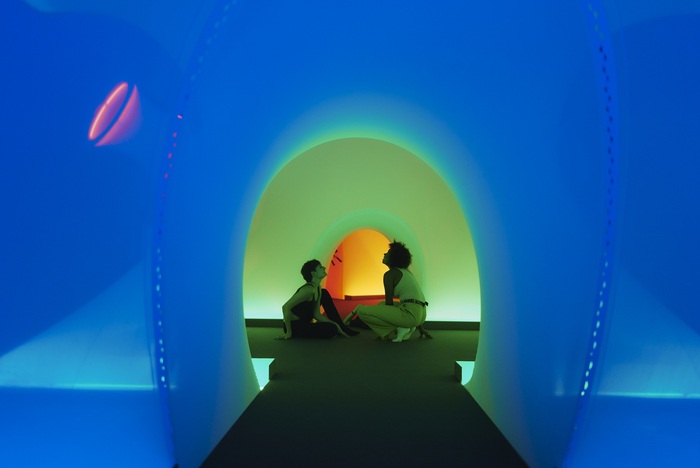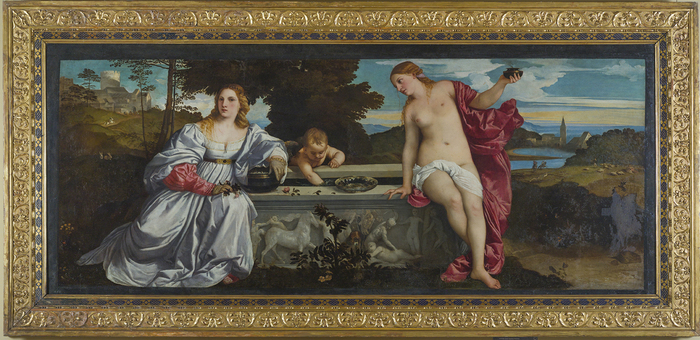This piece corresponds to one of the shipments of the weekly Correo del Arte newsletter, which is sent every two Wednesdays and is exclusively for EL PAÍS subscribers.
If you want to sign up to receive it, you can do so
at this link
The Prado Museum has brought together 96 works by Guido Reni for a great anthology that can be seen until July 9.
A tour to understand the work of the great Bolognese artist of the 17th century who was nicknamed El Divino.
With the help of curator David García Cueto, head of the museum's department of Italian and French painting up to 1800 and head of the exhibition, we analyze two pieces that somehow represent Reni's work.
[We reproduce the audios and messages that the commissioner has been sending me.
An authentic art class exclusively].
The massacre of the innocents
, National Art Gallery of Bologna, 1611
'The Massacre of the Innocents', Guido Reni Oil on canvas, 268 x 170 cm 1611 Bologna, Pinacoteca Nazionale di Bologna.
By concession of the Ministero della Cultura-Pinacoteca Nazionale di Bologna.
The painting represents an episode from the Gospel related to the birth of Jesus.
King Herod is afraid that the announced messiah will endanger his power and sends his henchmen to kill all the newborns in the town of Bethlehem where that new messiah was born.
“This crude representation is a search for effect, for the dramatization of the biblical event, very much in the baroque taste that Reni takes to the extreme.
It was a work of which the poet Giovan Battista Marino, one of the main exponents in the Italian language of the 17th century, said that terror and delight went hand in hand.
The horror represents the bloody fact and the delight is in the beauty of the colors”.
Two babies lie dead on the floor.
The crudeness is in the postures, the trails of blood and the color of their skins.Museo del Prado
“Reni was in a stage of experimentation in Rome, which is why the painting brings together the influence of Raphael, a certain more contrasting way of lighting taken from Caravaggio, the study of classical sculpture, specifically from the famous sculpture of the Niobe of the Vatican Museums that inspires the figure of the kneeling woman on the right;
and then the painter's own experimentation that acts as a melting pot to form his own style”.
“As a good Baroque painting combines finished actions with actions in progress.
What I find most shocking is the horror of the mothers who have already seen how some babies of other women have been executed and try at all costs to save their own.
Specifically, the woman whose hair is pulled by one of the thugs.”
Detail of the desperate scream of one of the women who tries to protect her baby, while a man grabs her hair and holds a weapon with his other hand. Museo del Prado
“Reni was called the anti-caravaggio because he is capable of forging an equally fascinating artistic proposal to that of Caravaggio, but with totally different aesthetic guidelines: much more methodical, thoughtful, cold;
not so spontaneous and full of passion, but equally capable of transporting to a higher dimension through that harmony and beauty, that ability to combine dramatic action and visual delight”.
“If we take for granted that Reni had a vocation to surpass Caravaggio, of which we cannot be sure either, it supposes a painting of such a superior level in the dramatic, compositional, executive aspects, that it could be said that it was, which proves that he overcomes it”.
Architecture serves Reni to frame the scene. Museo del Prado
Another aspect that the curator highlights is architecture, the way in which the artist uses two wings of tall old buildings, reminiscent of a theater stage, to frame the scene.
High in the sky, two little angels show the palms of martyrdom.
Salome with the Head of Saint John the Baptist,
1638-42.
Chicago, The Art Institute of Chicago, Louise B. and Frank H. Woods Purchase Fund
'Salome with the head of Saint John the Baptist', Guido Reni Oil on canvas, 248.5 x 174 cm h.
1638-42 Chicago, The Art Institute of Chicago, Louise B. and Frank H. Woods Purchase Fund.
The painting represents another biblical moment in which Salome receives the head on a platter from Saint John the Baptist after asking Herodias for it as payment for her dance.
“In Reni, the predilection for classical women, from the ancient world, from mythology responds to a market demand that was curious and fascinated by these female profiles from the past.
They are scenes that mix beauty and tragedy.
At the same time there is sumptuousness in the moment thanks to those layers so bombastic and rich in fabric”.
“The section of the exhibition where this painting is found is entitled
Skin and clothing
.
Reni creates a balance between showing the nudity of the female body —never in an excessive way, at most the breasts or something about the neckline— and the ostentation of these rich tunics that she paints.
It is probable that they are related to the market of Bologna, a city that was a center of silk production”.
The sumptuousness of Reni's clothing. Museo del Prado
“In mannerism, the previous artistic period, the usual thing was that the cloths were tight to the bodies.
In the Baroque they are released and create a fairly autonomous language.
This is what Reni does, he gives them a power that makes them almost a metalanguage on the human body.
On the other hand, he achieves a sculptural strength that refers to his sculptor stage in his youth”.
“There is a subject that has not yet been sufficiently investigated: the Bologna aristocracy, as it happened in other European cities, had the habit of making living scenes.
That is to say, dressing up and acclimating some event from the past.
It may be that, in certain celebrations, Bolognese ladies put on these Cleopatra or Salome costumes”.
“Sensuality must be judged by doing an exercise in abstraction, not with the criteria of the 21st century.
From our current perspective it may seem very cold.
In the Baroque there was a very limited direct experience with the human body and even more restrictive with that of the other gender.
Therefore, these images in the 17th century had a sensual and even erotic force.
There were very few occasions when a man could see a woman in that sensual or naked attitude”.
“The combination of sensuality and hardness is one of the keys to this type of painting.
A contrast that produces like and dislike.
There is beauty, sensuality, color.
And then there is the bloody thing about it.
Salome's indifference to this terrible prize that he has asked for having executed a wonderful dance leaves you perplexed.
There is no empathy."
Salomé's indifference to the terrible crudeness of the severed head. Museo del Prado
“It is a painting of the artist's final stage, a moment in which he faces a transformation of his art partly due to the need to obtain cash that allows him to feed his gambling, both to pay off debts and to continue gambling.
For this reason he paints very fast.
If you look at the foot of the page that is in the front, it is almost unfinished.
It is a very sketchy, very fragile way of defining painting.
Reni opens up to a certain dematerialization of his art with this executive speed ”.
“Despite this, he does not renounce a very careful formal beauty in the faces of the characters and in the clothing.
You have to look at the faces of the maidens who accompany Salomé and the very experimental pastel colors”.
The beauty of the maidens contrasts with the crudeness of the scene. Museo del Prado
Subscribe to continue reading
Read without limits
Keep reading
I'm already a subscriber

/cloudfront-eu-central-1.images.arcpublishing.com/prisa/BVKHLAA5Y5FSDJBRHJOBFECK7E.jpg)
/cloudfront-eu-central-1.images.arcpublishing.com/prisa/KXCDNWJR3VEUHHBRHIEWUQOTLU.jpg)












